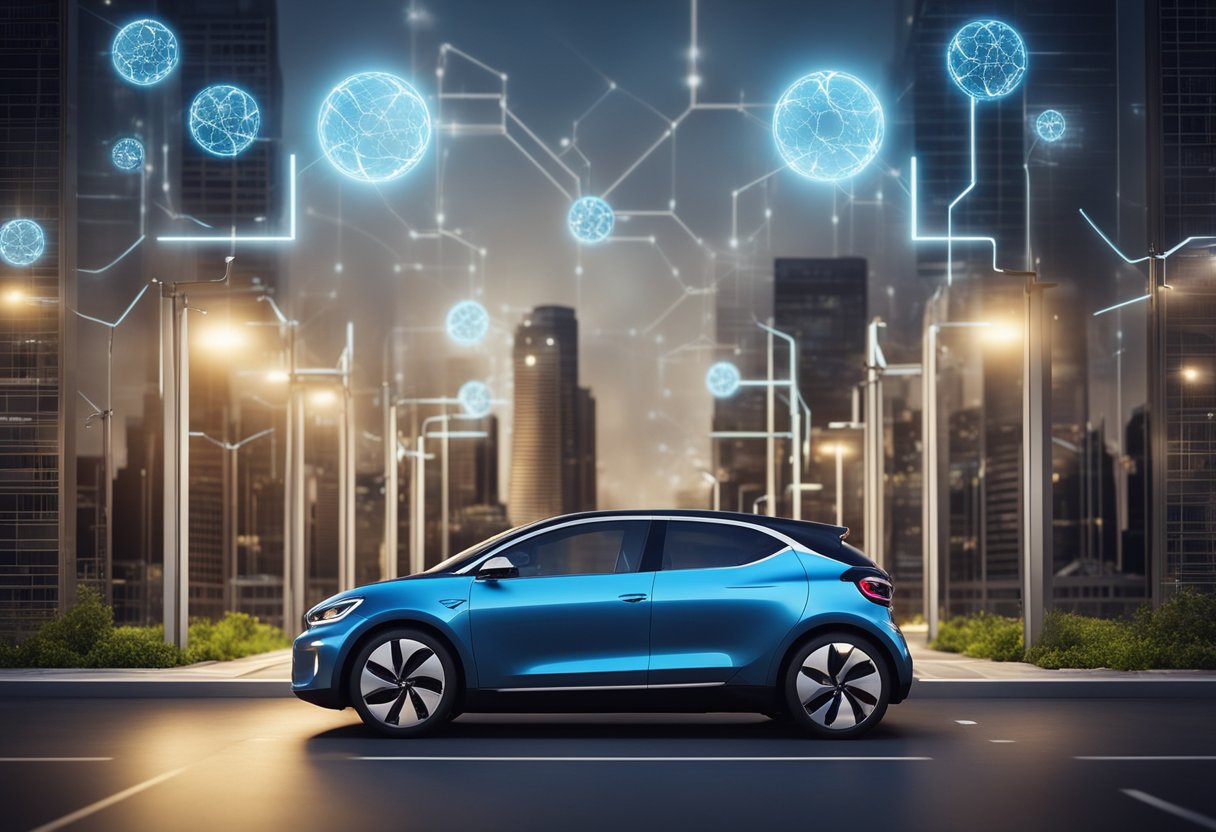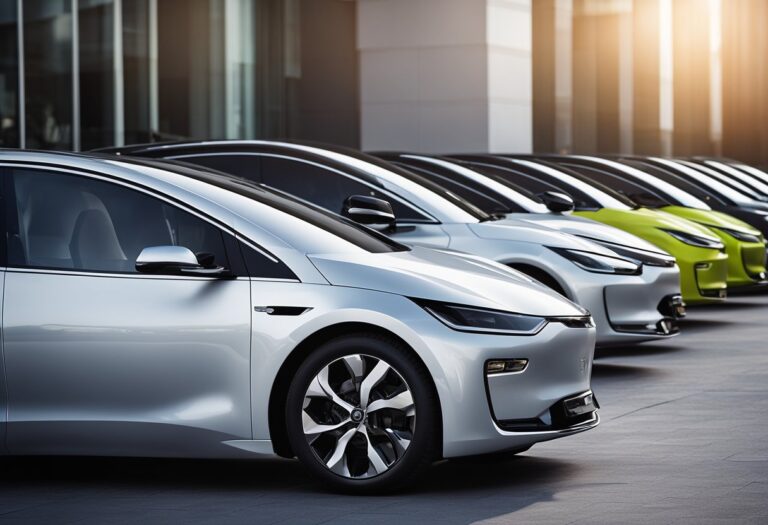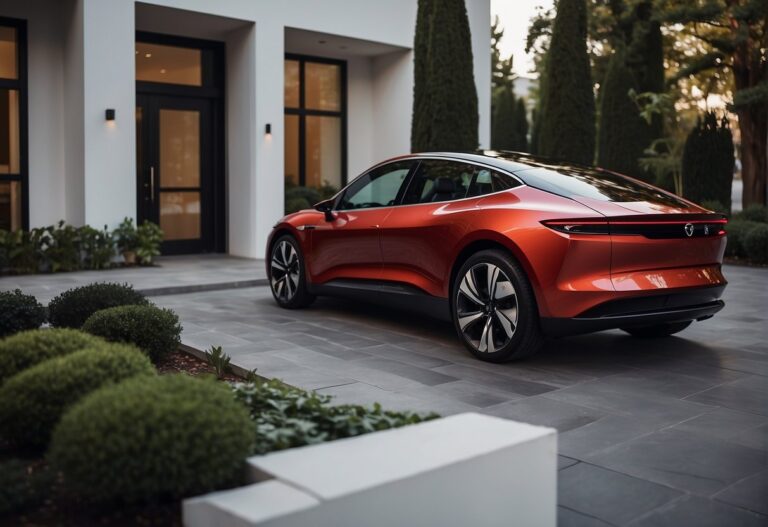Vehicle-to-Grid (V2G) technology is a revolutionary concept that allows electric vehicles (EVs) to be used as mobile power storage units. With V2G technology, electric vehicles can supply power to the grid when there is a high demand for electricity and recharge their batteries when there is excess power. This two-way flow of electricity between the vehicle and the grid provides a host of benefits for grid stability, renewable energy integration, and revenue generation.
V2G technology is a critical component of the energy transition towards a sustainable and resilient future. By harnessing the flexibility of electric vehicles and leveraging bidirectional energy flow, V2G technology has the potential to transform the way energy is managed and distributed. With V2G technology, electric vehicles can help balance the grid, reduce the need for expensive grid infrastructure upgrades, and provide economic benefits for EV owners.
As the world continues to transition towards renewable energy sources, V2G technology will play an increasingly important role in energy management. With the ability to store and release energy on demand, electric vehicles equipped with V2G technology can help integrate renewable energy sources into the grid, reducing dependence on fossil fuels and lowering greenhouse gas emissions. As such, V2G technology represents a paradigm shift in energy management, offering a clean, efficient, and cost-effective solution to the challenges of modern energy systems.
Understanding Vehicle-to-Grid (V2G) Technology
Vehicle-to-Grid (V2G) technology is a relatively new concept that is revolutionizing the way energy is managed. V2G technology enables electric vehicles (EVs) to store and discharge energy to and from the power grid. This technology is considered a game-changer in the energy sector, as it enhances grid stability, enables renewable energy integration, and provides backup power during peak demand.
The Basics of V2G and Its Components
V2G technology involves two main components: the electric vehicle and the smart grid. The electric vehicle is equipped with a battery that can be charged and discharged. The smart grid is an advanced power grid that can communicate with the electric vehicle and manage the flow of energy to and from the vehicle.
The V2G system uses bidirectional charging, which means that the EV battery can be charged and discharged based on different signals, such as energy production or consumption nearby. The V2G system also uses communication protocols to ensure that the EV and the smart grid are in sync.
The Role of Electric Vehicles in V2G Systems
Electric vehicles play a crucial role in V2G systems. The battery capacity of an electric vehicle can be used to store excess energy during off-peak hours and discharge it during peak hours. This helps to balance the supply of electricity to ensure that there is enough for people who need to use it.
Electric vehicles also provide an additional source of power when weather-dependent renewable energy sources are not available. For example, during a cloudy day, solar panels may not produce enough energy to meet the demand. In such cases, the V2G system can draw power from the electric vehicles and supply it to the grid.
Communication Protocols and Grid Integration
Communication protocols are essential for the successful integration of V2G systems. The communication protocols ensure that the EV and the smart grid are in sync and can communicate with each other. This helps to manage the flow of energy to and from the EV and the grid.
Grid integration is another critical aspect of V2G technology. The V2G system must be integrated into the power grid to ensure that it functions correctly. This involves the installation of charging infrastructure, which includes charging stations and other related equipment.
In conclusion, V2G technology is a game-changer in the energy sector. It enables electric vehicles to store and discharge energy to and from the power grid, enhancing grid stability, enabling renewable energy integration, and providing backup power during peak demand. The successful integration of V2G systems requires communication protocols and grid integration, which involves the installation of charging infrastructure.
Impact of V2G on Energy Management and Environment
Vehicle-to-Grid (V2G) technology is a promising solution for enhancing energy management and reducing environmental impacts. V2G technology allows electric vehicles (EVs) to interact with the electricity grid by providing power to the grid during peak demand periods and drawing power from the grid during off-peak periods. This technology has the potential to revolutionize the way we manage energy and reduce our dependence on fossil fuels.
Enhancing Grid Stability and Renewable Energy Integration
One of the main benefits of V2G technology is its ability to enhance grid stability and renewable energy integration. V2G technology allows for the integration of renewable energy sources into the electricity grid by providing a mechanism for balancing supply and demand. EVs can act as a distributed energy resource, providing power to the grid during peak demand periods and drawing power from the grid during off-peak periods. This helps to reduce the need for conventional power plants and enhances the stability of the electricity grid.
Reducing Greenhouse Gas Emissions and Fossil Fuel Dependence
V2G technology has the potential to significantly reduce greenhouse gas emissions and our dependence on fossil fuels. By allowing EVs to interact with the electricity grid, V2G technology can help to reduce the need for conventional power plants, which are major contributors to greenhouse gas emissions. Additionally, V2G technology can help to reduce our dependence on fossil fuels by providing a mechanism for storing and distributing renewable energy.
Economic and Environmental Benefits for Consumers and Society
V2G technology can provide economic and environmental benefits for both consumers and society. For consumers, V2G technology can help to reduce the cost of owning an EV by providing a source of income through participation in demand response programs. For society, V2G technology can help to reduce the cost of electricity by reducing the need for conventional power plants and enhancing the stability of the electricity grid. Additionally, V2G technology can help to reduce greenhouse gas emissions and our dependence on fossil fuels, which has important environmental benefits.
In summary, V2G technology has the potential to revolutionize energy management and reduce our dependence on fossil fuels. By enhancing grid stability and renewable energy integration, reducing greenhouse gas emissions and our dependence on fossil fuels, and providing economic and environmental benefits for consumers and society, V2G technology is a promising solution for building a sustainable energy system.
Frequently Asked Questions
How does V2G technology contribute to the stability of the electrical grid?
V2G technology allows electric vehicles to not only draw power from the grid but also to feed power back into it. This bidirectional flow of energy can help balance the grid during periods of high demand, reducing the risk of blackouts and brownouts. By providing a source of distributed energy storage, V2G can also help integrate renewable energy sources into the grid, which can be intermittent and difficult to predict.
What are the potential economic advantages for consumers using V2G systems?
Consumers who use V2G systems can potentially earn revenue by selling excess energy back to the grid during peak demand periods. This can help offset the cost of owning an electric vehicle and make EVs more financially viable for a wider range of consumers. Additionally, V2G can help reduce the cost of electricity for all consumers by providing additional sources of energy during periods of high demand.
Which challenges must be overcome for V2G to become widely adopted?
One of the main challenges facing V2G adoption is the need for a standardized communication protocol between EVs and the grid. Without a common language, it can be difficult for utilities to effectively manage the flow of energy to and from EVs. Additionally, there are concerns around the impact of V2G on EV battery life and the potential for increased wear and tear on batteries.
How can V2G systems be integrated with renewable energy sources?
V2G can help integrate renewable energy sources into the grid by providing a source of distributed energy storage. During periods of high renewable energy production, excess energy can be stored in EV batteries and fed back into the grid during periods of high demand. This can help reduce the need for traditional fossil fuel power plants and increase the overall share of renewable energy in the grid.
In what ways does V2G technology impact electric vehicle battery life?
The impact of V2G on EV battery life is still being studied, but early research suggests that frequent cycling of the battery between charging and discharging can lead to increased wear and tear. However, V2G systems can be designed to minimize the impact on battery life by limiting the depth of discharge and optimizing charging cycles.
What regulatory developments are needed to support the growth of V2G?
To support the growth of V2G, regulatory frameworks must be developed that enable utilities to effectively manage the flow of energy to and from EVs. Additionally, standards must be established for communication protocols between EVs and the grid to ensure interoperability. Finally, policies must be put in place to incentivize the adoption of V2G technology, such as tax credits or subsidies for consumers who participate in V2G programs.



